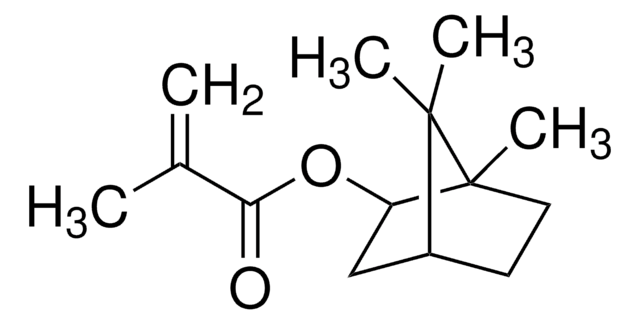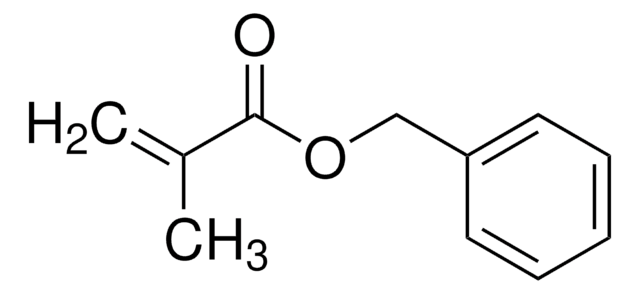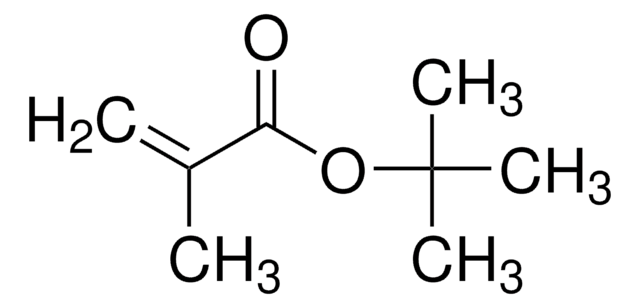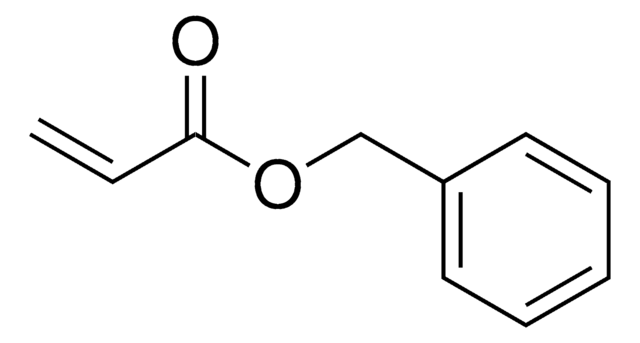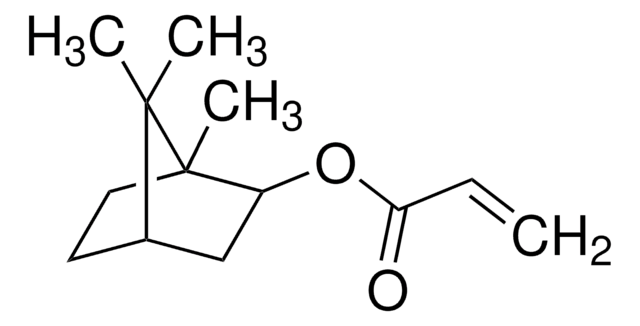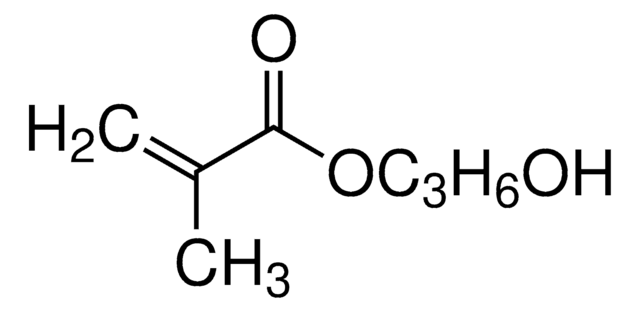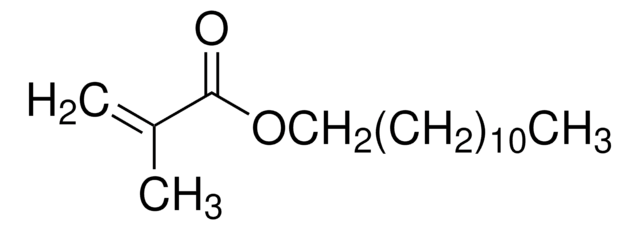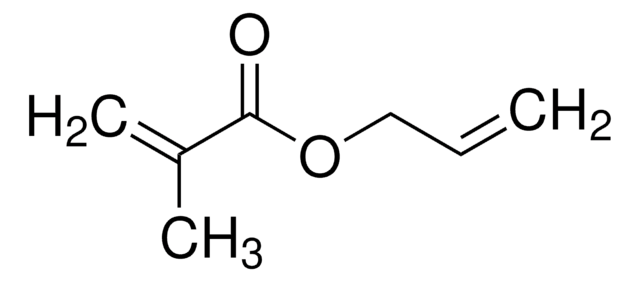408964
Cyclohexyl methacrylate
≥97%, contains ~60 ppm monomethyl ether hydroquinone as inhibitor
동의어(들):
Methacrylic acid cyclohexyl ester
로그인조직 및 계약 가격 보기
모든 사진(1)
About This Item
Linear Formula:
CH2=C(CH3)COOC6H11
CAS Number:
Molecular Weight:
168.23
Beilstein:
2045235
EC Number:
MDL number:
UNSPSC 코드:
12162002
PubChem Substance ID:
NACRES:
NA.23
추천 제품
분석
≥97%
형태
liquid
포함
~60 ppm monomethyl ether hydroquinone as inhibitor
refractive index
n20/D 1.458 (lit.)
bp
68-70 °C/4 mmHg (lit.)
density
0.964 g/mL at 25 °C (lit.)
SMILES string
CC(=C)C(=O)OC1CCCCC1
InChI
1S/C10H16O2/c1-8(2)10(11)12-9-6-4-3-5-7-9/h9H,1,3-7H2,2H3
InChI key
OIWOHHBRDFKZNC-UHFFFAOYSA-N
유사한 제품을 찾으십니까? 방문 제품 비교 안내
일반 설명
Cyclohexyl methacrylate(CHMA) is an acrylate monomer with a high-refractive index, commonly used in ultraviolet (UV) curing processes due to its ability to rapidly polymerize under UV light exposure. UV-curable CHMA-based coatings, adhesives, and inks offer fast curing, excellent hardness, hydrophobicity, and high durability. It has good optical clarity, resulting in optical lenses with high transparency and minimal distortion. It can also be used as a crosslinking agent in copolymer systems for dental composites and tissue engineering to enhance the mechanical and thermal properties of the resulting materials.
애플리케이션
Cyclohexyl methacrylate can be used:
- As a monomer to prepare poly(cyclohexyl methacrylate) (PCHMA) thin films for high-performance luminescent solar concentrators(LSCs). These LSCs can be used to fabricate high-quantum yield photovoltaic solar cells.
- As a comonomer to prepare photo-patternable quantum dot-acrylate resins for fabricating light-emitting diodes with high color transparency.
- As a monomer to synthesizesuperhydrophobic silica nanoparticle surfaces for various applications such as anti-corrosionsurfaces, drag reduction, and energy conservation.
신호어
Warning
유해 및 위험 성명서
Hazard Classifications
Eye Irrit. 2 - Skin Irrit. 2 - Skin Sens. 1 - STOT SE 3
표적 기관
Respiratory system
Storage Class Code
10 - Combustible liquids
WGK
WGK 1
Flash Point (°F)
181.4 °F
Flash Point (°C)
83 °C
개인 보호 장비
Eyeshields, Gloves, type ABEK (EN14387) respirator filter
시험 성적서(COA)
제품의 로트/배치 번호를 입력하여 시험 성적서(COA)을 검색하십시오. 로트 및 배치 번호는 제품 라벨에 있는 ‘로트’ 또는 ‘배치’라는 용어 뒤에서 찾을 수 있습니다.
Florian Jakobs et al.
Materials (Basel, Switzerland), 13(8) (2020-04-29)
For most kinds of active polymer optical fibers, a homogeneous distribution of dye molecules over the entire fiber length and cross section is required. In this study, chemical bonding of dyes to poly(methyl methacrylate) (PMMA) by copolymerization is achieved within
Leonard I Atanase et al.
Journal of colloid and interface science, 549, 171-178 (2019-04-29)
The interpolymer complex formation between poly(vinylpyridine)-based polymers with poly(acrylic acid) (PAA), in aqueous or organic medium, is driven by the hydrogen-bonding complexation. Well-defined nanostructures, with specific practical applications, may be obtained by taking advantage of such non-covalent interactions. Poly(2-vinylpyridine)-b-poly(cyclohexyl methacrylate)
자사의 과학자팀은 생명 과학, 재료 과학, 화학 합성, 크로마토그래피, 분석 및 기타 많은 영역을 포함한 모든 과학 분야에 경험이 있습니다..
고객지원팀으로 연락바랍니다.